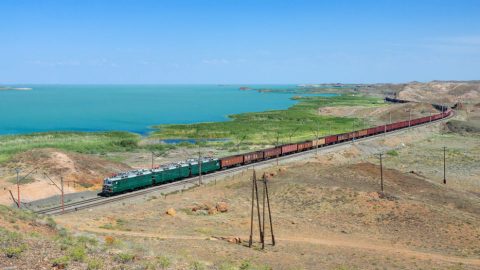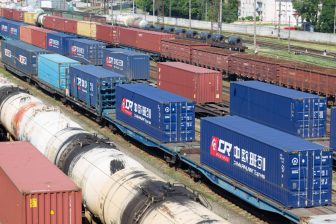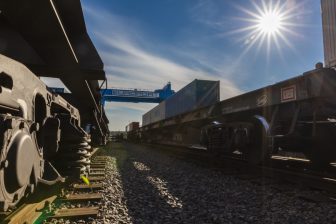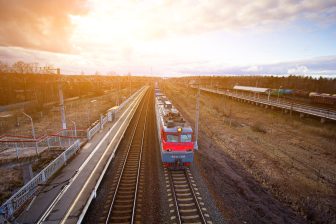
UTLC seeks European cooperation on New Silk Road
UTLC ERA has presented the #UE4EU’ – UTLC ERA for European Union initiative. The operator on the New Silk Road aims to develop long-term relations with European transport and logistics companies in operating the broad gauge network of the CIS countries. It made these remarks at the 36th International Exhibition of Transport and Logistics in Paris last month.
“It is necessary to find a common language, set common goals and build a road map of cooperation” said Alexey Grom, UTLC ERA president. UTLC ERA operates 76 per cent of all container traffic on the 1520 mm railway gauge of the Eurasian corridor. Last year it developed the Eurasian Rail Alliance Index (ERAI), a tool showing the indicative value of Eurasian railway transit, in cooperation with INFRAONE. Grom presented the tool to the audience in Paris, sharing the finding that the New Silk Road has become very competitive.
Proven competitiveness
Rail transit traffic on the China-Europe route and in the opposite direction became competitive largely due to the high speed of delivery and optimal service tariffs, UTLC states. According to Alexey Grom, these two advantages are clearly illustrated by the value of the ERAI index. Especially compared with sea freight, the rail option between Europe and China is becoming increasingly attractive.
Indeed. the potential of the New Silk Road is high: in 2018 container traffic between Europe and China increased by about a third compared with 2017, amounting to 370 thousand TEUs in both directions. The imbalance of east-west freight traffic decreased during 2018: the number of westbound trains grew by 37 per cent compared to a 90 per cent increase in eastbound trains. This is ` noteworthy development, as westbound traffic initially prevailed.
ERAI
The main goal in developing the ERAI index is to increase customer awareness of the cost of rail along the 1520 gauge, the UTLC explained. In the future, the index can be used when negotiating tariffs with logistics companies and shippers on the corridor.
The value of the ERAI index depends on the level of infrastructure tariffs of carriers, the speed of cargo delivery by rail, the capacity of infrastructure as well as a number of other indicators. By using the Index a shipper will be able to independently calculate the costs of transportation between China and Europe transportation and decide on a preferred means of modality, the operator argued.
RailFreight Summit
UTLC will share its experience on the New Silk Road at the RailFreight Summit, to be held in Gdansk on 15 and 16 May. It will join the Polish rail freight operator PKP CARGO and the Chinese logistics firm Beijing Trans Eurasia Internacional Logistics Ltd ( BTE) in discussing the current bottleneck at the Malaszewicze-Brest border crossing between Poland and Belarus. This is the most consumed, but also most congested border point on the New Silk Road.
This year’s RailFreight Summit is the second edition of the event. Top-level speakers will gather in the intermodal hub to discuss New Silk Road connections and other routes through Poland and Central Europe. Intermodal hubs and emerging markets are also among the themes. Registration is still open. More information about the event can be found on the website.
Also read:





